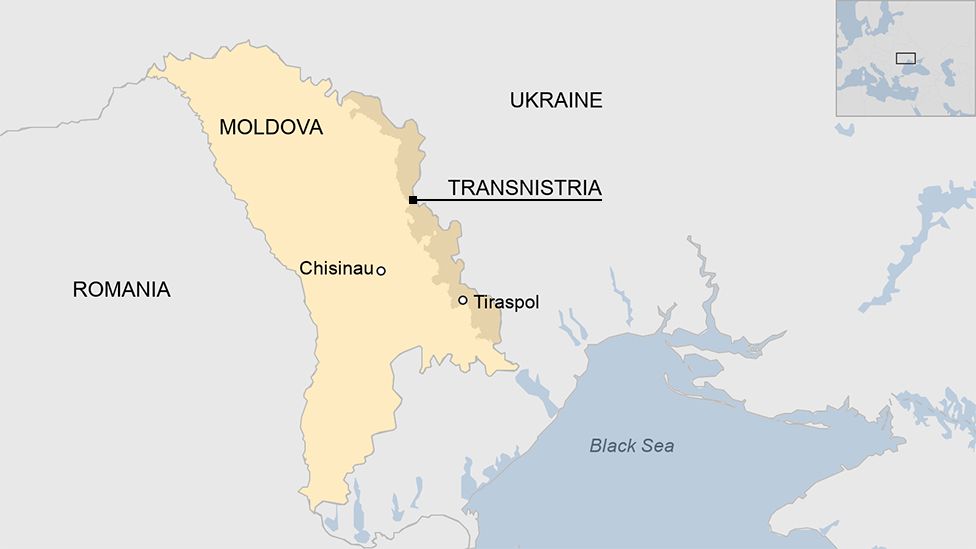Transnistria profile - Overview
- Published

The separatist region of Transnistria or Trans-Dniester is a narrow strip of land between the Dniester river and the Ukrainian border.
It proclaimed its independence from Moldova in 1990, and is considered one of the post-Soviet space's "frozen conflicts", along with Abkhazia, South Ossetia, and Artsakh.
The international community does not recognise its self-declared statehood, and the territory remains in a stand-off with Moldova.
In a referendum in September 2006, not recognised by Moldova or the wider international community, the region reasserted its demand for independence and backed a plan eventually to join Russia.
Read more country profiles, external - Profiles by BBC Monitoring, external
In the post World War Two carve-up of the region, Moscow created Moldova's forerunner, the Moldavian Soviet Socialist Republic, from two disparate elements: the mainly Russian-speaking Dniester region, formerly an autonomous part of Ukraine, and the neighbouring region of Bessarabia, which had been part of Romania from 1918-1940.
But in the Soviet Union's dying days, alarm grew in the Dniester region over growing Moldovan nationalism and the possible reunification of Moldova with Romania. A 1989 law that made Moldovan an official language added to the tension and the region broke away in September 1990.
The breakaway territory's paramilitary forces took over Moldovan public institutions in the area in 1991. Fighting intensified, culminating in a battle on the right bank of the Dniester in June 1992. Up to 700 people were killed in the conflict.
A ceasefire was signed in July 1992, and a demilitarised security zone was established. The settlement was enforced by Russian army troops already stationed in the territory.
Russian presence
The continuing presence of Russian troops has been a stumbling block in peace talks and the West is concerned about the Soviet-era arsenal in the territory. A pull-out began in 2001 but was halted when Trans-Dniester blocked the dispatch of weapons. Subsequent agreements to resume failed to reach fruition.
Long-running talks supervised by the OSCE, Russia and Ukraine have yet to yield a political solution. In 2004 a Russian-brokered plan, which would have made the presence of Russian troops permanent, sparked mass protests in Moldova and was shelved.
There are disputes over language issues. Though dominated by Russian-speakers, around 40% of the population in Transnistria - have Moldovan - which is virtually identical to Romanian - as a first language.
Transnistria contains most of Moldova's industrial infrastructure, but its economic potential is limited by its international isolation. It has its own currency, constitution, parliament, flag and anthem. One of the last bastions of Soviet-style rhetoric, the territory has nonetheless privatised some of its industrial enterprises.
Russia shores up the region with financial assistance. It has a reputation for corruption, organised crime and smuggling, and has denied accusations of illegal arms sales and of money laundering.